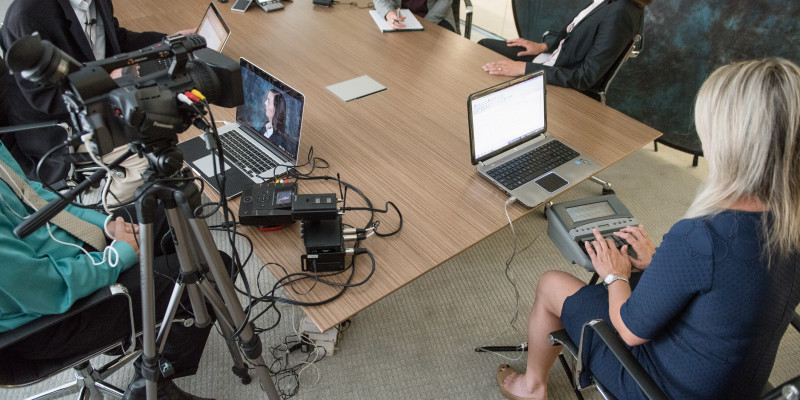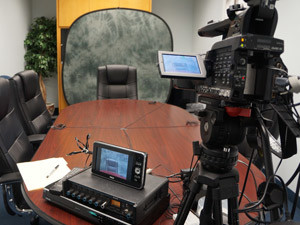Legal Videography: Strengthening Communication Between Lawyers and Clients
Wiki Article
Why Legal Videography Is Critical for Accurate Court Recordings
The function of lawful videography in court room settings can not be overemphasized, as it works as an essential tool for preserving the stability of court records. By recording both spoken and non-verbal interaction, it boosts the clarity of witness statements and reflects the nuances of courtroom communications. This thorough documents not just aids in minimizing prospective misconceptions yet likewise supports appellate evaluations, thus strengthening the judicial procedure. The effects of integrating legal videography right into conventional court room practices elevate vital inquiries concerning its broader impact on the legal system. What might these ramifications involve?Value of Visual Proof
In the world of lawful process, the value of aesthetic evidence can not be overemphasized. Aesthetic proof functions as an effective tool in establishing realities, supporting testaments, and enhancing the total quality of an instance. This sort of evidence, which consists of photographs, video clips, and representations, can provide a tangible context that verbal descriptions usually do not have, thereby offering juries and courts a more clear understanding of the situations surrounding an instance.Additionally, aesthetic proof help in the retention of details. Human cognition is naturally aesthetic, and individuals are more probable to keep in mind and understand info presented in an aesthetic layout. In the court, this can be important, as engaging aesthetic proof can persuade viewpoints and strengthen the story offered by lawful reps.
Furthermore, using visual evidence can reduce misconceptions and obscurities that frequently occur from verbal exchanges. By supplying a straight depiction of occasions, visual proof assists to eliminate subjective interpretations and promotes an extra objective exam of the truths. The combination of visual evidence right into lawful process not just strengthens the stability of the judicial process but additionally enhances the chance of accomplishing a just result.
Recording Non-Verbal Hints
Utilizing innovative videography techniques can dramatically enhance the capture of non-verbal hints throughout legal proceedings. Non-verbal communication, including faces, body language, and eye call, plays a critical duty in conveying emotions and objectives that might not be explicitly specified in verbal testament. legal videography. Lawful videography uses high-def cameras and strategic angles to guarantee that these refined hints are tape-recorded with clearness and accuracyThe capability to evaluate non-verbal behavior can give useful context to declarations made during court sessions. A witness's hesitation or confidence can be translated via their posture or motions, potentially affecting the court's understanding of trustworthiness. The use of close-up shots can aid concentrate on an audio speaker's expressions, allowing for an extra nuanced understanding of the statement.
Furthermore, integrating multiple cam angles can create a comprehensive sight of communications, highlighting dynamics between events included. This complex approach not only improves the precision of the court record however also aids in preserving the stability of the judicial procedure - legal videography. Eventually, recording non-verbal hints via legal videography fosters a richer, much more complete depiction of courtroom process

Enhancing Testimony Dependability
The reliability of statement can be considerably reinforced through the use of top quality lawful videography. Video recordings work as an objective medium that captures not only the talked words of witnesses yet likewise the subtleties of their distribution, including tone, pacing, and psychological expressiveness. This multifaceted paperwork offers a more clear understanding of the witness's reliability and objectives, which can be pivotal in lawful proceedings.In addition, lawful videography minimizes the capacity for false impressions that may occur from created transcripts alone. When jurors can observe a witness's disposition and body language along with their testimony, they are much better equipped to analyze the credibility and reliability of the evidence presented. This visual context can reinforce the testimonial story, making it a lot more compelling and reliable.
Furthermore, the visibility of a video recording can deter possible inconsistencies in testimony. more info here Witnesses may be much more careful in their statements when they know they are being tape-recorded, leading to even more precise and honest accounts. Generally, high-quality legal videography improves the honesty of statement, guaranteeing that the court has accessibility to a complete and honest depiction of the realities as shared by the witnesses.
Supporting Appeals and Reviews
Lawful videography plays an important duty in supporting allures and reviews by providing a detailed aesthetic document of court procedures. This aesthetic documents catches not only the spoken words of witnesses and attorneys yet additionally the subtleties of body language, intonation, and court room characteristics. Such aspects can be pivotal in understanding the context of testaments and arguments provided.In the appellate procedure, where the focus is on errors of law and step-by-step fairness, a video clip document can work as a crucial tool for appellate courts. It enables courts to examine the initial trial context, guaranteeing that decisions are based on a full understanding of the proceedings. The ability to visually examine the disposition of witnesses or the communications between parties can expose insights that composed transcripts may ignore.

Additionally, legal videography can help in making clear uncertainties in statements or procedural judgments, consequently reinforcing the basis for an allure. By providing a trusted, objective account of what taken place in court, lawful videography not just sustains the integrity of the legal process but additionally equips all parties included to make enlightened choices regarding their instances.
Improving Court Room Procedures
Enhancing court room efficiency, lawful videography improves processes by offering prompt access to visual records of procedures. This innovation permits courts, lawyers, and courts to review essential statement and evidence, making certain that all celebrations have a clear understanding of the situation. By capturing the nuances of verbal and non-verbal communication, videography enhances the record, making it much easier to realize the context and weight of statements.
In addition, video recordings can facilitate remote engagement in hearings, enabling higher adaptability in organizing and involvement, which is specifically important in intricate instances involving multiple stakeholders.
Final Thought
Finally, legal videography plays a vital role in ensuring exact court recordings by offering essential visual evidence that records both verbal and non-verbal interaction. This technique boosts the dependability of testimonies, supports appellate testimonials, and improves court anchor room procedures. By promoting a comprehensive understanding of courtroom characteristics, legal videography ultimately adds to much more equitable judicial end results, strengthening the stability of the legal system and helping with informed decision-making.Report this wiki page